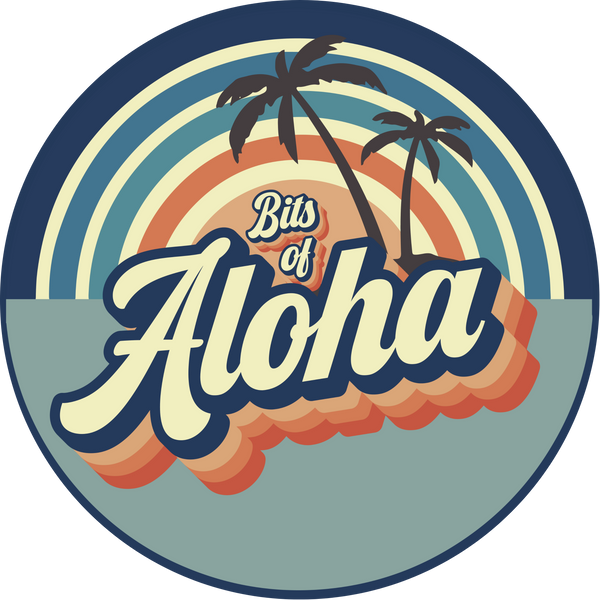
The History of the Aloha Shirt: From Hawaiian Origins to Post-War Popularity
Share
Origins in Hawaii
The aloha shirt, with its vibrant colors and bold tropical prints, is one of the most recognizable symbols of Hawaiian culture and casual island fashion. The roots of this iconic garment can be traced back to the early 20th century as Hawaii became a melting pot of cultures, including Native Hawaiians, Chinese, Japanese, Filipinos, and Westerners. The convergence of these diverse influences contributed to the development of the aloha shirt.
Before the aloha shirt emerged, local clothing styles were heavily influenced by both Western dress and traditional Hawaiian garments. Native Hawaiians traditionally wore kapa, a fabric made from pounded tree bark, often decorated with intricate patterns. However, as Western missionaries arrived in the 19th century, they introduced more conservative styles, such as the holokū (a long, loose dress) for women and Western shirts for men.
The true precursor to the aloha shirt came from the vibrant Japanese and Filipino textiles that were brought to Hawaii by immigrant workers. Japanese laborers wore casual kimono-style garments made from brightly colored printed fabrics, while Filipinos brought the Barong Tagalog, an embroidered lightweight shirt. These multicultural influences provided the foundation for what would become the aloha shirt.
The Birth of the Aloha Shirt
The first true aloha shirts emerged in the 1920s and 1930s when enterprising tailors in Honolulu began crafting short-sleeved shirts from imported Japanese kimono fabric. These early shirts featured bold designs, including cherry blossoms, bamboo, and geometric patterns. Local tailors, such as Musa-Shiya Shoten, started marketing these shirts to both locals and visiting tourists, recognizing their appeal as comfortable yet stylish attire suited to Hawaii’s warm climate.
One of the first businesses to actively promote and sell aloha shirts was Musa-Shiya Shoten, a tailor shop owned by Koichiro Miyamoto. He advertised these shirts in Honolulu newspapers as early as the 1930s. Another key figure was Ellery Chun, a Chinese-Hawaiian businessman who is often credited with coining the term "aloha shirt." Chun began producing colorful, floral-printed shirts in the 1930s and registered the term as a trademark in 1936. He sold them from his store, King-Smith Clothiers, and they quickly became popular among tourists and locals alike.
The Rise of the Aloha Shirt
During the 1930s and early 1940s, the aloha shirt grew in popularity, fueled by the booming tourism industry in Hawaii. As more visitors flocked to the islands, they sought out souvenirs that encapsulated the laid-back Hawaiian lifestyle. The aloha shirt, with its exotic prints and easy-wearing fabric, became a must-have item.
Local manufacturers, including Kamehameha Garment Company and Alfred Shaheen’s Shaheen’s of Honolulu, began producing aloha shirts on a larger scale. Shaheen, in particular, revolutionized the industry by developing his own textile printing methods, allowing for unique and high-quality designs that were exclusive to his brand. His company also introduced more sophisticated and artistic patterns, moving beyond simple floral designs to intricate Polynesian and Asian motifs.
During World War II, the U.S. military stationed in Hawaii adopted a more casual dress style due to the tropical climate. Many servicemen wore aloha shirts while on leave, and they brought them back to the mainland after the war. This exposure helped introduce the aloha shirt to a wider audience in America.
Post-War Popularity and Cultural Impact
After World War II, Hawaii became an even more popular travel destination, aided by the increasing availability of commercial air travel. Hollywood also played a significant role in popularizing the aloha shirt. Films set in Hawaii, featuring stars like Elvis Presley, Montgomery Clift, and John Wayne, often showcased actors wearing the colorful shirts. Elvis, in particular, became closely associated with the aloha shirt, famously wearing one on the cover of his 1961 album "Blue Hawaii."
By the 1950s and 1960s, the aloha shirt had become a symbol of relaxed, tropical leisure. It was no longer just a souvenir but a staple of island and resort fashion. Major clothing manufacturers in Hawaii, such as Reyn Spooner, began refining the style, introducing muted and reverse-print designs that appealed to a more sophisticated clientele. These "reverse-print" shirts, where the fabric was printed on the inside for a subdued look, became popular as business attire in Hawaii.
As Hawaii gained statehood in 1959, there was a push to promote local culture and industries. The Aloha Week festivals and the increasing adoption of "Aloha Friday" (a tradition similar to casual Fridays) in Hawaiian workplaces helped cement the aloha shirt’s status as acceptable business attire. This movement later influenced the concept of "Casual Friday" on the U.S. mainland.
The Aloha Shirt in Modern Fashion
Throughout the latter half of the 20th century, the aloha shirt continued to evolve. While it remained a staple of Hawaiian culture, it also found its way into global fashion trends. In the 1980s and 1990s, designers experimented with bolder and more abstract patterns, sometimes incorporating pop culture elements. The shirt even experienced a revival in the 2010s, embraced by younger generations and high-fashion brands seeking to capitalize on its retro appeal.
Today, aloha shirts remain a vibrant symbol of Hawaiian identity and lifestyle. Whether worn casually on the beach, as business attire in Hawaii, or as a statement piece in fashion-forward circles, the aloha shirt continues to embody the spirit of relaxation, creativity, and multicultural heritage.
Conclusion
The history of the aloha shirt is a testament to Hawaii’s unique cultural melting pot and its lasting influence on global fashion. From its origins in the 1920s as a fusion of Japanese, Filipino, and Western styles to its post-World War II popularity across America, the aloha shirt has transcended its island roots to become an enduring symbol of leisure and tropical style. As long as people seek to capture the carefree essence of Hawaii, the aloha shirt will remain an iconic piece of fashion history.
